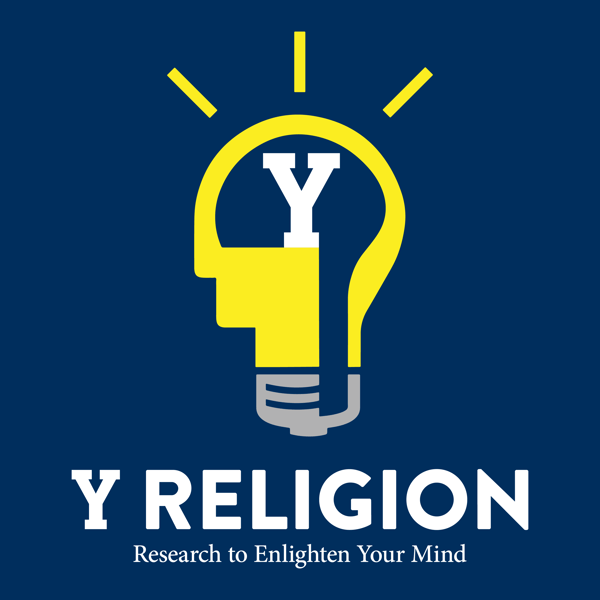Episode 125: Envisioning the Last Supper (Matthew Grey)
Y Religion
BYU Religious Education
4.8 • 1.7K Ratings
🗓️ 1 April 2025
⏱️ 52 minutes
🧾️ Download transcript
Summary
According to the earliest gospel accounts, on the night before his crucifixion, Jesus dined with his disciples to observe the feast of the Passover and institute what would later become the Christian eucharist (or sacrament). What would it have looked like to sit down with them that night? In this episode, Professor Matthew Grey reassesses the New Testament narratives of the Last Supper, especially its physical setting and manner of dining, by examining modern research on early Jewish dining customs with archaeological data. He challenges traditional views of Jesus and his disciples dining in an affluent upper room with a Roman triclinium (banquet hall), as the event is often depicted in art. Instead, he argues that the meal likely took place in a modest, non-elite home and reflected the lower-class dining practices of the time: sitting on reed mats, sharing cooking pots in clusters of 3—4 individuals, dipping their hands or bread into the shared vessels, and passing around a shared cup of wine. Professor Grey details how examining these new perspectives might help us envision and experience a more accurate understanding of the Last Supper’s historical and social setting as described in the synoptic gospels.
Publications:
- “‘Where May I Eat the Passover with My Disciples?’: Reassessing the Urban Setting, Furnished Room, and Dining Practices of Jesus’s Last Supper,” in Pushing Sacred Boundaries in Early Judaism and the Ancient Mediterranean, Brill, 2023
- A Place Called Gethsemane: Seeing the New Testament Story and Site in its First-Century Context with Richard Holzapfel, Deseret Book, 2025
- “Simon Peter in Capernaum: An Archaeological Survey of the First-Century Village,” in The Ministry of Peter, the Chief Apostle, Religious Studies Center, 2014
Click here to learn more about Matthew Grey
Transcript
Click on a timestamp to play from that location
| 0:00.0 | Hello, why religion friends, John Hilton here. |
| 0:03.0 | Have you ever heard of Gadelaya, the son of Pasha? |
| 0:07.0 | Probably not, and that's okay. |
| 0:10.0 | But let me tell you a little bit about him. |
| 0:12.0 | He's actually named in Jeremiah chapter 38, verse 1. |
| 0:16.0 | He was a royal official living in Jerusalem in about the year 600 BC. He opposed Jeremiah and urged the |
| 0:23.7 | king to put Jeremiah in prison. What makes Getaliah special to me is that while I was living in |
| 0:30.3 | Jerusalem, I was able to visit the location where scholars found a seal impression with the name |
| 0:37.2 | Gedelaya, son of Pasashir, stamped on it. |
| 0:40.3 | It's incredible to read a verse from the Bible |
| 0:44.3 | and see physical evidence that this person actually existed |
| 0:48.3 | and to be able to walk where he walked. |
| 0:51.3 | This archaeological study didn't affect my testimony of the Bible, but it did |
| 0:55.8 | make the Bible more real for me. As I taught at BYU's Jerusalem Center, and just a quick side |
| 1:02.7 | note, the Jerusalem Center has reopened. If you're a BYU student, I would definitely recommend |
| 1:07.5 | you consider spending a semester there. But while I was there at the center, |
| 1:11.7 | it was so fun to take the students to different locations and at first they would just look at |
| 1:16.0 | a site and say, wow, that's a nice pile of rocks, Brother Hilton. But once we understood how that pile |
| 1:22.0 | of rocks connected to the Bible, scripture came alive in a very tangible way. To be clear, you don't have to travel |
| 1:30.2 | to Israel to be able to learn from archaeological discoveries. In fact, today, you can just sit |
| 1:36.2 | back and listen as we explore what one modern archaeologist has discovered about the Last |
| 1:42.0 | Supper. I know when we're having these conversations about |
... |
Please login to see the full transcript.
Disclaimer: The podcast and artwork embedded on this page are from BYU Religious Education, and are the property of its owner and not affiliated with or endorsed by Tapesearch.
Generated transcripts are the property of BYU Religious Education and are distributed freely under the Fair Use doctrine. Transcripts generated by Tapesearch are not guaranteed to be accurate.
Copyright © Tapesearch 2025.

